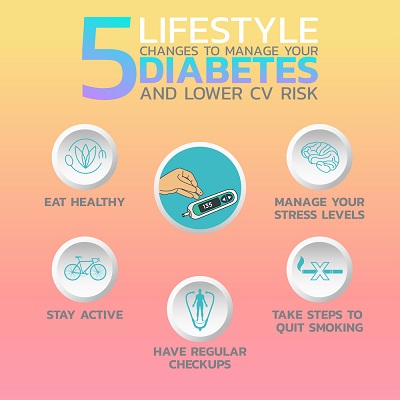 The diagnosis of diabetes can be a hard one and something you may not have expected. You know there will have to be changes in your lifestyle if you are to remain healthy. Here are some things you should know about the lifestyle choices that are critical to manage type 2 diabetes:
The diagnosis of diabetes can be a hard one and something you may not have expected. You know there will have to be changes in your lifestyle if you are to remain healthy. Here are some things you should know about the lifestyle choices that are critical to manage type 2 diabetes:
Take a Hard Look at Your Weight
Not everyone with diabetes is overweight but many of them are, especially those with type 2 diabetes. This means seeing a nutritionist or a doctor and determining the appropriate weight for you and setting that as your goal. Look into any number of the many locally- or nationally-based weight loss programs. You can work with your doctor to come up with a weight loss program you can stick with.
See a Nutritionist
This can become something you do regularly or just in the beginning of your diagnosis. You can get some great written materials and can take notes on how you will begin your eating life as a diabetic.
Begin to Eat Foods with a Low Glycemic Index
The glycemic index is a measure of how fast a type of food raises blood sugar. Some foods have a lot of sucrose or plain sugar in them and raise the blood sugar very fast. This causes a great spike in the blood sugar and is not healthy for diabetics especially. Low glycemic index foods gradually let your body adjust to the slowly rising blood sugar. You can get a list of the glycemic index of foods from the nutritionist or at a bookstore.
Keep Track of What You Eat
This helps you know if your efforts at the end of the day have been successful. Look at the number of calories you took in and pay attention to the number of fat grams you eat as well as the fiber in the food you are consuming. Fiber is good for a diabetic diet because it diminishes the rush of glucose into your bloodstream when you eat your meals.
Fiber is also essential for heart health, and since 50% of diabetics die from heart disease or stroke, fiber can help prevent such complications. Fiber is also good for digestive health. The best sources of fiber are vegetables, berries, and whole grains.
Be Prepared to Inspect Your Feet Every Night Before You Go to Bed
Diabetics, like anyone, can be cut on something, step on a sharp object or have a part of their foot rub abnormally on a part of the shoe. In diabetics, these things don’t heal fast enough and infections can easily happen. Keep your feet clean and dry and make sure any open areas are checked every night to make sure they are healing properly.
A Word About Exercise
As a diabetic, you should consider exercise to be a big part of your life. Exercise not only keeps your weight down, it burns sugars and keeps your heart healthy. Diabetics are at a greater risk of developing heart disease and exercise can ameliorate some of this risk.
There are two types of exercise: anaerobic and aerobic exercise. Anaerobic exercise is strength training such as that with free weights or with the use of weight lifting machines. You can lose a moderate amount of weight and can gain muscle mass, which replaces the fat in your diet. Aerobic exercise means exercise that causes you to breathe hard and causes your heart rate to increase.
Aerobic exercise is the exercise you should focus on most because it positively affects your blood cholesterol, lowers blood sugar, and keeps your heart healthy. It includes things like riding a bicycle, walking, running, swimming, and dozens of other exercises that can you can do alone, with a partner or with your entire family.
Try to engage in aerobic activity at least 4-5 times per week for a half hour at a time. You can do anaerobic activity 1-2 times a week in between aerobic sessions. The added exercise will make you feel better and will help you to control your diabetes.
If you are new to exercise hiring a personal trainer that can develop a safe and effective routine just for you is a really great idea. They offer education, guidance, and invaluable support that will keep you on track!






